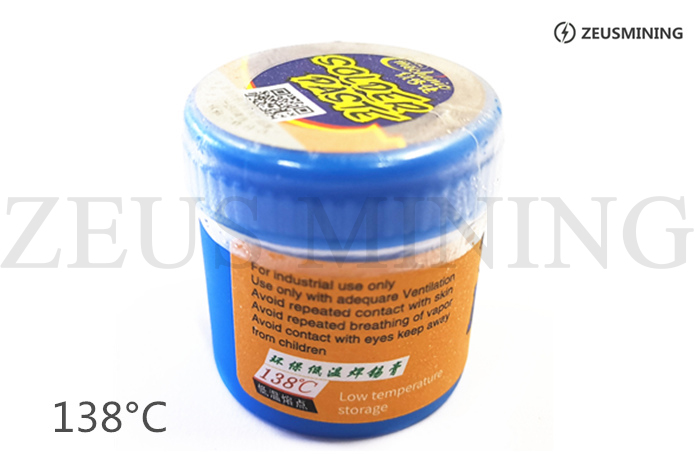ASIC Miner ICERIVER KAS KS0 Profitability In the realm of cryptocurrency mining, the Iceriver KAS KS0 miner has garnered widespread attention. Tailored specifically for the Kaspa network's KHeavyHash algorithm, it boasts high hashing power and low power consumption, making it an ideal choice for many miners. In this article, we will comprehensively assess IceRiver KS0 profitability while considering the Kaspa market conditions and the attributes of KS0 miner. Kaspa Market Dynamics Kaspa is a vibrant cryptocurrency network aimed at delivering high performance and scalability for everyday transactions. At the time of writing this article, the Kaspa coin trades at approximately $0.04959. But it's essential to note that cryptocurrency markets are highly susceptible to price volatility. Hence, investors must remain vigilant about market dynamics. Additionally, the Kaspa network's mining difficulty and reward mechanisms play a role in mining returns. Attributes of the IceRiver KS...
What is the role of each metal element in the solder paste?
Generally speaking, the solder paste formula is different, the process is different, and the type is different. Common solder pastes include low-temperature solder paste, medium-temperature solder paste, and high-temperature solder paste. So what many people wonder is: what is the difference between low temperature, medium temperature, and high-temperature solder paste? How to distinguish it?
Introduction of solder paste types:
1. Low-temperature solder paste
Solder paste with a melting point of 138°C is called low-temperature solder paste. When the components of the patch cannot withstand the temperature of 200°C and above, and the patch reflow process is required, the low-temperature solder paste must be used for the soldering process. It protects the original PCB that cannot withstand high-temperature reflow soldering and is very popular with users. Its alloy composition is tin-bismuth alloy. The peak temperature of low-temperature solder paste reflow soldering is between 170-200°C.
2. Medium temperature solder paste
Medium temperature solder paste is solder paste for SMT lead-free process. Its alloy composition is Sn/Ag/Bi, the particle size of the tin powder is between 25 and 45um, and the melting point is 183°C. The characteristics of medium temperature solder paste are mainly the use of imported special rosin, good adhesion, can effectively prevent slump, less residue after reflow, and transparent, which does not hinder ICT testing.
3. High-temperature solder paste
High-temperature solder paste is generally composed of metal elements such as tin, silver, and copper. The melting point of high-temperature solder paste is 217°C. It is still recommended that you use high-temperature lead-free solder paste, which has high reliability and is not easy to desolder and crack.
Analysis of metal elements in solder paste:
1. Sb
Weld strength is increased by adding elemental antimony without affecting wettability. Prevent tin bugs. Zi, Cd, or galvanized metals should be avoided as these can cause brittle solder joints.
2. Bi
Bismuth lowers the soldering melting point by improving its wettability. With enough lead and tin, bismuth forms Sn16Pb32Bi52 crystals with a melting point of only 95°C, which diffuse along grain boundaries and can cause solder joint failure at lower temperatures. Such solder joints are also prone to cracking.
3. Cu
Copper lowers the melting point, improves thermal cyclic fatigue performance, and improves the wetting of molten solder. It also reduces the rate at which copper dissolves from the board and slows some of the leads in the liquid solder to form metal compounds. Can promote the growth of tin whiskers. A solution of (about 1%) copper in a tin can be used to suppress the dissolution of the metallization under the thin film bump of BGA chips, such as Sn94Ag3Cu3.
4. Ni
Nickel can be added to the solder alloy to form a supersaturated solution to inhibit the dissolution of the metallization under the film bump.
5. In
Indium reduces melting point and prolongs ductility. In the presence of lead, it forms a ternary compound that undergoes a phase transition at 114°C. The very high cost (several times silver) and low availability. They are easily oxidized, which leads to repair and remanufacturing problems, mainly when oxides cannot be used to remove flux. During GaAs die-attach, In alloys are mainly used in low-temperature applications and to dissolve gold much less than in tin. Indium-based solders are prone to corrosion, especially in the presence of chloride ions.
6. Pb
Pb is cheap and has suitable properties. Wetter than Sn. However, it is toxic and has been phased out in some countries. It can prevent the growth of tin whiskers and inhibit tin pests. Reduce the solubility of Cu and other metals in Sn.
7. Ag
Ag provides mechanical strength but is less malleable than Pb. Without Pb, it improves the thermal cycling resistance to fatigue. Using SnAg solder with HASL-SnPb coated leads with a melting point of 179°C, adding Ag to tin significantly reduces the solubility of the silver coating in the Sn phase. In eutectic tin-silver (3.5% Ag) alloys, it tends to form platelets of Ag3Sn, which can act as crack initiation sites if formed near high-stress points; Ag content needs to be kept below 3% to inhibit these questions.
8. Sn
Sn is usually the basic ingredient in the solder paste. It has good strength and wettability. However, it is prone to tin damage, tin cry, and the growth of tin whiskers. In addition, it easily dissolves Ag, Au, and other metals such as Cu, which is a problem for tin alloys with higher melting points and reflow temperatures.
9. Zn
Zn can lower the melting point, and the cost is low. However, it is very susceptible to corrosion and oxidation in air, so zinc-containing alloys are unsuitable for some soldering; for example, Zn-containing solder pastes have a shorter shelf life than zinc-free ones. In addition, a brittle Cu-Zn intermetallic layer can be formed in contact with Cu.
10. Ge
Ge in tin-based lead-free solders inhibits oxide formation; less than 0.002% increases oxide formation. The optimum concentration for inhibiting oxidation was 0.005%.



Comments
Post a Comment
Tell us your opinion